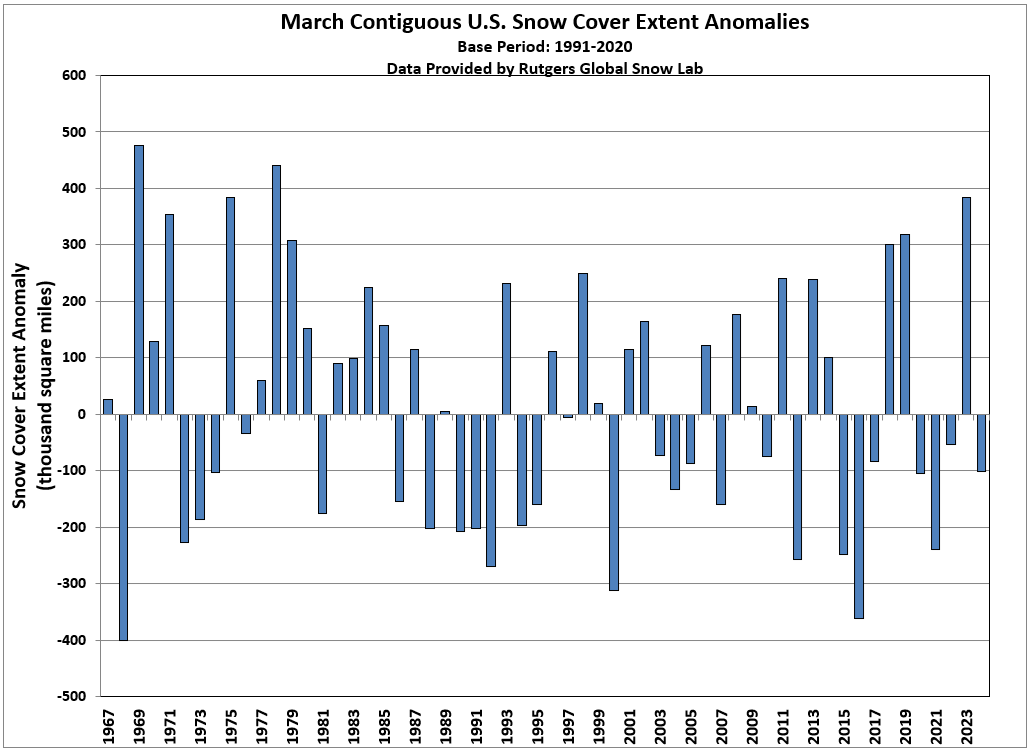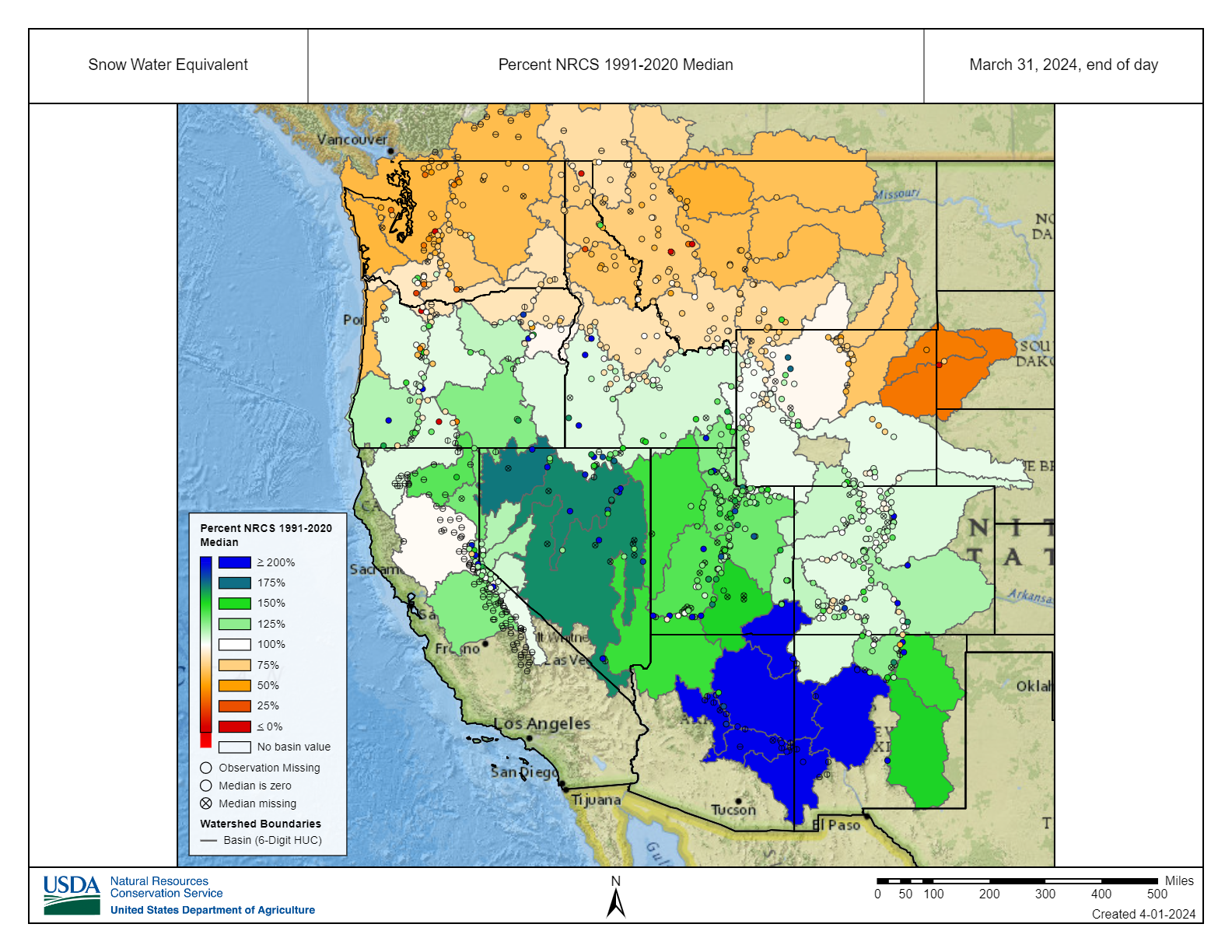Approximately 16 percent of the contiguous U.S. (CONUS) was covered by snow at the beginning of March according to NOAA's National Snow Analysis. At the beginning of the month, snow covered much of the mountainous West and Northeast, and parts of the northern Plains and Great Lakes. Snow cover increased to 23 percent on the 9th before steadily decreasing to 12 percent on the 20th — the minimum extent for the month. Snow cover remained steady for a few days before a strong winter storm brought heavy snow to northern portions of the contiguous U.S. On March 25, snow cover peaked at nearly 33 percent — the maximum snow cover extent for the month — with snow covering most of the northern half of the U.S. and southern portions of the Rockies. During the remaining days of the month, snow coverage decreased steadily, blanketing much of the mountainous West, parts of the northern Plains and northern portions of the Great Lakes and Northeast. By March 31, snow covered 17.9 percent of the CONUS.
According to NOAA data analyzed by the Rutgers Global Snow Lab, the March snow cover extent was 642,900 square miles, 100,000 square miles below the 1991-2020 average, and the 20th-lowest value in the 58-year satellite record. Above-average snow cover was observed across much of the Plains and in parts of the Sierras, Cascades and Rockies, while below-average snow cover was observed from the northern Plains to the Northeast, and in parts of the northern and southern Rockies.
Melting of winter and spring mountain snowpack provides a crucial summer water source across much of the western United States. The total annual water budget for agriculture and human use in the mountainous West is highly dependent on the amount of snow melt that will occur in spring and is proportional to the amount of snow on the ground, which can be approximated by a measure of the snow water equivalent (SWE).
On February 29, SWE values were below normal across much of the West, while portions of the Great Basin, central and southern Rockies and eastern Oregon observed above-normal SWE values. By the end of March, SWE values were below normal across northern portions of the West, while central and southern parts of the West observed above-normal SWE values.
 NOAA's National Centers for Environmental Information
NOAA's National Centers for Environmental Information

